Having worked on franchises like V for Vendetta, The Matrix, and Star Wars, James McTeigue knows a thing or two about media that speaks to gamers. During the keynote at the recent [a]list summit McTeigue talked both about his experience as a director and the potential of gaming as a medium.
-
VPC: $8.35 ▲Value Per Click
-
VPCO: $0.00 ▲Value Per Comment
-
VPL: $0.00 ▲Value Per Like
-
VPM: $0.00 ▲Value Per 1k Impressions
-
VPS: $0.00 ▲Value Per Share
-
VPV: $0.00 ▲Value Per View
-
VPCO: $7.71 ▼Value Per Comment
-
VPL: $0.00 ▲Value Per Like
-
VPM: $0.00 ▼Value Per 1k Impressions
-
VPV: $0.00 ▲Value Per View
-
VPC: $2.85 ▲Value Per Click
-
VPCO: $0.00 ▼Value Per Comment
-
VPFAV: $0.00 ▲Value Per Favorite
-
VPL: $0.00 ▼Value Per Like
-
VPM: $0.00 ▲Value Per 1k Impressions
-
VPR: $0.00 ▲Value Per Reply
-
VPS: $4.08 ▲Value Per Share
-
VPV: $0.00 ▲Value Per View
-
VPC: $20.78 ▼Value Per Click
-
VPCO: $0.00 ▲Value Per Comment
-
VPL: $0.00 ▲Value Per Like
-
VPM: $0.00 ▲Value Per 1k Impressions
-
VPS: $0.00 ▼Value Per Share
-
VPV: $0.00 ▲Value Per View
[a]list Summit Keynote: The Future Of Game Marketing
Greg Short kicked off the [a]list summit in San Francisco with an in depth and informative keynote. He shared data from EEDAR on the state of the games industry and specifically talked about various marketing trends.
Keeping Magic Alive And Thriving
As Magic: The Gathering turns 20 years old this year, its creators at Wizards of the Coast are showing that they have no intention of letting it slip into anything resembling niche fandom. It easily could. Despite still boasting millions of players – throngs of them were in the back hall at last month’s PAX East in Boston – the property continues to revolve around card games as its core product line. That’s despite several attempts to bring it to video games over the last two decades.
Wizards finally got traction on that front with the release of Duels of the Planeswalkers 2012, essentially a digital light version of the card game for Xbox 360, PlayStation 3 and PC. The game and its update, Duels of the Planeswalkers 2013, are designed to introduce new players to the game play in Magic. Wizards of the Coast brand manager Elaine Chase labels their development as “a marketing expense.”
“When we’re talking about getting new people into Magic, it really is a question of making sure that Magic as a game is relevant to today’s gamers because in its essence it’s a table top game. Who plays table top games ” says Chase. “So we took the game and we made an Xbox Live Arcade game out of it, and we did it initially as a marketing expense. Let’s put the demo out there, let’s see what happens. Next thing we know, we’re top of Microsoft’s charts, we’re number one on XBLA charts.”
Wizards is also trying to broaden Magic’s appeal in the way it markets the property, whether for video games or the core table top games. The company is putting more effort towards video trailers and creative approaches, such as those at preorder, that try to capture peoples’ imaginations through Magic’s engrossing storyline and universe.
We talked with Chase about how they’re undertaking these efforts while continuing to keep core fans happy.
Exclusive: Analyzing Microsoft’s Xbox One Marketing Strategy
Microsoft sent a clear marketing message today with the unveiling of the Xbox One, its new console. Don Mattrick, head of Microsoft’s Interactive Entertainment, put it simply: The Xbox One is the “Ultimate all-in-one home entertainment system.” The separation from Sony is clear. Sony’s initial reveal of the PS4 was all about games; Microsoft, while giving prime spots to games, spent the majority of its reveal talking about TV, entertainment, sports and features only partly related to games.
Microsoft was careful to make games as much a part of every feature as possible. For instance, showing off the ability of the Xbox One to switch between live TV and games, or how you can be playing a game while doing something else on the side. Microsoft understands that gamers are going to be the first audience to be aware of this device, and the ones who will be lining up to buy it initially.
The essence of Microsoft’s marketing strategy will be to reach TV viewers of all types as well as gamers. Making TV easy to use, and switching between functions swiftly, and making Skype calls on your TV are all cool, generally useful features. The appeal of just saying “Xbox on” and having your TV and Xbox come on should be broad; even more popular will be the ability to say “Watch CBS” and not have to fumble with your remote.
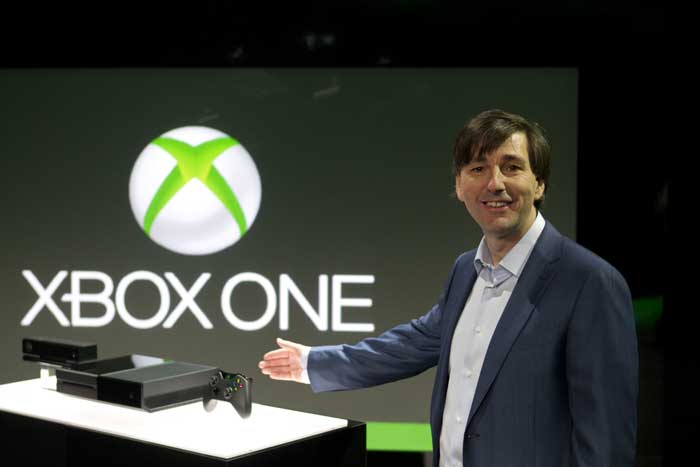
It’s also apparent that Microsoft knows the right gamer buttons to push ““ the company was careful to mention there are 15 new exclusive titles in development that will launch within the first 12 months, and 8 of them are new franchises. That’s not counting the third-party support. One thing we didn’t hear about was indie developers, or any easing up on the bureaucratic complexity that is publishing on Xbox Live currently. Many developers would like to be able to push out updates freely, and we don’t know yet if Microsoft will make this happen.
The event revealed that Microsoft is creating live-action entertainment for the Xbox One based on the Halo brand, and exec produced by none other than Steven Spielberg. There’s a deal with the NFL, and an exclusive deal with EA Sports, and an exclusive arrangement with Activision for the Xbox One to get Call of Duty: Ghosts DLC before other platforms.
Microsoft made the case at this event for the Xbox One to be the key box you put under your TV to make it simple to operate and bring the latest games to you along with all sorts of entertainment. While the E3 show will doubtless focus on all the games and the way the Xbox One is great for gamers, this event argues that Microsoft will be making its overall marketing pitch to a broad audience, not just gamers. Gamers may well get targeted messages, but when Microsoft hits the mass media it will be trying to sell the Xbox One to anyone with a TV.
We have yet to learn many key details, such as the pricing, what services will be offered at what cost, and even exactly when the new console will be on sale. Microsoft has also said nothing about its marketing plans for the Xbox One, but you can be sure there will be a massive spend. This product is being positioned as a key part of Microsoft’s future, and they will do what it takes to make it successful.
Activision Planning Increased Marketing Spend
Activision’s latest quarterly earnings call revealed some concerns over increased competition this year, and a determination on the part of executives to increase marketing spending in response. Both Activision Blizzard CEO Bobby Kotick and Activision Publishing CEO and president Eric Hirshberg made it clear that marketing was going to be called on to defend the market share of Activision’s key franchises.
Here’s what Hirshberg had to say about Skylanders, the billion dollar toy/game hybrid brand that was a big winner last Christmas, and was the #1 selling game in dollar terms for Q1 of 2013: “This Fall, we are pushing the genre forward once again with Skylanders SWAP Force. Retailer and consumer response has been very positive, and we expect to receive even more shelf space this fall than last. However, we will obviously see more direct competition and expect to see significant resources being spent on competitive launches. As always, we will remain laser focused on delivering the things we know our consumers care about most: Innovation and great game play, all supported by the largest sales and marketing campaign in Skylanders franchise’s history.”
Hirshberg is obviously referring to Disney’s upcoming toy/game hybrid, Disney Infinity, which will feature many of Disney’s iconic brands. This is shaping up to be a battle royale between the two brands. Activision has the advantage of first-to-market, and has great relationships with key retailers like Toys R Us. Disney, of course, also has great relationships with those retailers that include a much broader range of products; Disney brands probably represent a respectable chunk of toy retail.
With Disney cutting back on other areas of game development, it looks like Disney Infinity will be by far the most important game for the company in 2013. This implies a good level of marketing attention and spending on the part of Disney, which is no doubt why Activision isn’t standing pat.
One important component of this marketing battle is going to be shelf space and retail positioning. Activision will have an advantage here, with a much broader array of Skylanders figures (old and new) that have demonstrated solid revenue generation. Expect Activision to have key endcaps nailed down at Toys R Us, with extensive signage. Disney should try to have an impressive kiosk to counter this, but are they ready to make an investment on that scale You’ll be able to judge how serious Disney is about this title by how much presence the company has at key retailers like GameStop, Walmart, Toys R Us, and Target.
Expect both Disney and Activision to make solid TV ad buys aimed squarely at the younger kids who will be clamoring for these collectible toys and the accompanying video games. As usual, don’t expect to see budget numbers from anyone, but you’ll be able to see the spending’s magnitude for yourself if you tune into kid’s programming at all.
Skylanders is just one of Activision’s key franchises under attack, though. CEO Bobby Kotick noted that “the competitive landscape will likely require us to further increase our sales and marketing investments for our three largest franchises, especially in the important holiday season.” He’s referring to Call of Duty, which will be under attack from Electronic Arts’ Battlefield 4, and Blizzard’s aging World of Warcraft, which is bleeding subscribers to a myriad of free-to-play options.
Again, look to the retail stores to see what sort of ground game is being played. Last year Call of Duty had a strong visual presence on the retail floor. Will Electronic Arts be willing to compete heavily for attention at retail Or will EA focus on the air war with a strong television ad buy, and work social media heavily Will we see some interesting marketing twists from either company We’ll know more after E3, when some aspects of the marketing plans will be revealed.
One thing is clear, though: Activision intends to fight a hard marketing battle this holiday, and is willing to spend more to win.
Exclusive: Marvelously Exceeding
Ask anyone in the gaming industry and you’ll know it’s been hard for mid-level players these past several years. Mid-tier games had difficultly succeeding against the production value of AAA games but weren’t necessarily cheap to produce like indie titles. Even still, this is the climate that XSEED has succeeded in, localizing many games for the PSP (another challenging environment) and finding success with series like Valhalla Knights, Wild Arms, and Ys. The publisher got its biggest break ever last year when it landed The Last Story and has used that to land deals for the recently released Pandora’s Tower and the upcoming Killer is Dead.
XSEED Games (which was recently put under the umbrella of Marvelous USA) is doing well in the present and looks well set up for the future. We talked with Ken Berry, executive vice president of XSEED Games, about Pandora’s Tower and looking ahead.
Pandora’s Tower has seen quite a bit of interest in the U.S. since its announcement. Is it exciting to be able to bring over the last of the so-called “Operation Rainfall” titles to the U.S.?
It’s definitely exciting to be able to work on another high-profile Wii title that had been published by Nintendo in other territories. From the day we announced the title, the fan support has been fantastic.

Do you think the $39.99 pricing has attracted more attention to the release of Pandora’s Tower?
I’m not so sure about that, especially since fans kept asking for some kind of special packaging elements like we did with all launch copies of The Last Story. Certainly it helped that it wasn’t at a $49.99 price point, but the tradeoff was that we brought the game to market as quickly as we could with no bonuses.
Did the success of The Last Story lead to this opportunity to publish Pandora’s Tower in the U.S.?
Yes, it absolutely did. We had a lot of ties to The Last Story at that time due to our president’s ties to Sakaguchi-san of Mistwalker as well as our parent company doing the programming for it, but we didn’t have any particular ties to Pandora’s Tower. After we launched The Last Story to great success last year, we mutually decided with Nintendo that it was very beneficial for both parties and that we would extend the “one-off” relationship to one other title, Pandora’s Tower.
Pandora’s Tower is one of the most popular Wii games on GameFAQs. What’s the community reception been like for the game?
The community reception has been great so far, especially for the people playing the game for the first time. I think there was a common misconception going around that Pandora’s Tower was the weakest of the most recent RPGs for Wii, but once people got their hands on it they were able to see that wasn’t the case at all. It may be a very different kind of game that relies much more on action elements, but it’s just as engaging as The Last Story was for most people.
Certain niche publishers develop fanbases that consider almost any release they have as a “must buy”. Do you feel like XSEED may have crossed that threshold with some gamers with releases like The Last Story and Pandora’s Tower?
I would be honored if we did, but frankly, I don’t know if any developer/publisher deserves that amount of trust from their fans. We’re a business, so it’s our job to show people that our next project should be on their radar and worthy of their hard-earned money because of this reason or that reason. We know that gamers have an infinite number of games to choose from these days on almost a limitless number of platforms, so we can’t rest on our laurels and assume that a fanbase will blindly follow no matter what we publish next.
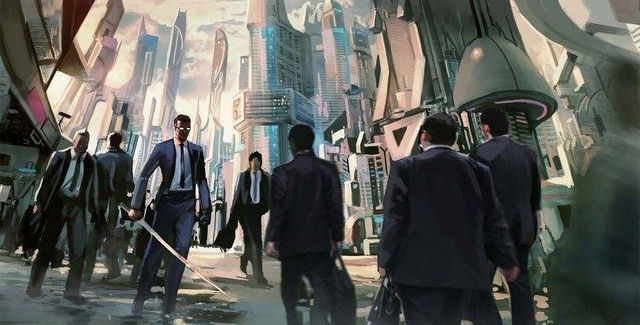
Looking ahead, do you feel like Killer is Dead is a big opportunity to expand the market for XSEED published games?
We definitely feel that Killer is Dead can appeal to a wide group of people, not just our usual core audience that mainly focuses on RPGs. The key will be getting the additional retail exposure at the mass market retailers like Wal-Mart, Best Buy and Target, which is essential to branching out to the more casual gamers that may not closely follow gaming news and upcoming releases.
Ken, thanks.
Aiming At The New Influencers
Advertisers are again struggling to increase engagement with their online and digital campaigns. The answer may lie in a new approach to social and earned media that moves from chasing merely influential users to targeting celebrity influencers.
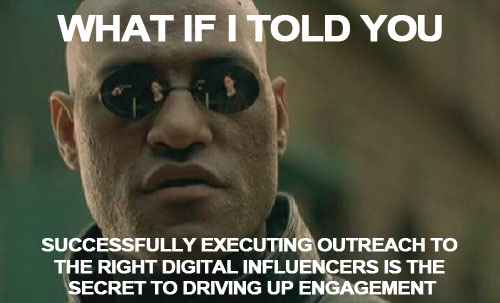
After a decade of watching engagement with traditional digital ads strive for the bottom, marketers had a brief reprieve with social media and how it enabled easy sharing of branded content. Not anymore. The big social nets are now far more concerned with selling placements and generating ad revenue. That means tighter conduits to their members. At the same time, heavy social users are gravitating towards niche nets and even becoming selective about what they post and share.
As one answer, brands are putting greater importance on what kind of content they create. Want people to engage with your campaign? Make sure what’s being communicated is engaging to begin with — make it relevant, timely, and easy to share. More importantly make it either useful, entertaining or both. It’s not guaranteed to drive up engagement, but it does set the stage for it.
On the other side of the equation, the formula for ramping up engagement may lie in how digital natives, and especially millennials, increasingly seek out product information from online experts with common interests. Online bloggers/vloggers, commentators, product reviewers, social media gurus and even bona fide celebrities who’ve carved out online clout are showing increasing reach and authority on the internet.
They’re the new influencers.
For many, they’ve become their celebrity product endorsers, speaking directly to them through the various channels they’ve come to trust for information, and often playing a pivotal role in their purchase decisions. They’re authentic in that they connect to the right audience and deliver branded content in the right context. That gives them credibility with both fans and brands.
At Ayzenberg, we’ve seen proof where harnessing digital influencers can propel campaigns to far exceed expectations. In one campaign we ran last year for Microsoft, we supported the launch of four Xbox Live products with an online video and social media program built around four YouTube stars. Each ‘YouTuber’ delivered a live cast show featuring one of the products, with promotions targeting their subscriber base and social networks. Engagement was through the roof, yet the proof in the pudding was how the games performed at launch. Granted, the lineup was a solid one — it included the now blockbuster hit Minecraft Xbox 360 Edition — but thanks to day-one awareness, two of the games set launch sales records. That included Minecraft breaking the record for a Xbox Live Arcade launch.
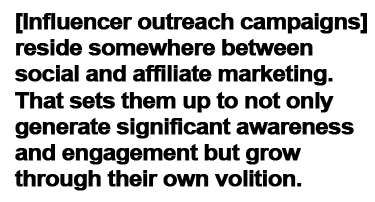
More recently, we ran a digital campaign for Warner Bros.’ Injustice: Gods Among Us, a fighting game based on the DC Comics universe. We mixed digital influencers with comic book experts and celebrities to promote a virtual tournament dubbed “Injustice Battle Arena,” where the game’s superheroes and villains squared off in face-to-face battles, and fans voted on the outcomes. The campaign garnered nearly 19 million views over ten weeks and more than 850 percent ROI in earned media value.
After these and other campaigns we’ve charged up a new weapon aimed at the new influencers – the Influencers Outreach Network, or [ion]. It’s the product of three years of experience running these types of programs, but it’s more than a wrapper on proven methodology. It’s a proprietary platform designed to first connect brands with the right influencers, then accurately measure results. The results are authenticated to put a ROI metric on campaigns. That’s whether they’re based on impressions and earned media value or go deeper down the conversion funnel.
Once a brand activates an [ion] campaign, they have the opportunity to partner with a custom built network of popular community operators and channel owners. Currently more than 7,000 affiliate influencers are part of the [ion] program, and it’s growing daily. These are YouTubers, bloggers, industry professionals, theatrical, television and other social media influencers. Their reach is staggering, with audiences in the hundreds of millions and engagement metrics measured in billions.
Ayzenberg [ion] Demo Reel
For targeting, [ion] is categorized by content specialty to best reach a specific audience, whether gaming, entertainment, technology, music, parent or beauty. In every category, Ayzenberg’s [ion] enlistees have shown to excel in acting as real-life product endorsers. They share what they know with their subscribers and sell a brand or product as an experience they found worthwhile.
That’s one part of [ion]. The other is the platform’s proprietary analytics tools that allow for precise measurement of campaign metrics. KPI can be built on goals for impressions and brand awareness, such as cost-per-view (CPV), or the complete journey down the funnel with conversion and cost-per-acquisition (CPA). Whether it’s earned media value or CPA, results from [ion] campaigns are authenticated by a third party company similar to traditional media buys.
We know how fast targets move when it comes to digital and social media. Influencer outreach isn’t a silver bullet but it’s a powerful way to engage consumers. Why? Because when these campaigns are executed properly, they reside somewhere between social and affiliate marketing. That sets them up to not only generate significant awareness but engage and grow through their own volition. At the same time, access to data at every step of the way equips stakeholders to evaluate individual parts of what they’re running mid-stream, so there’s even an agile component to it. Dial in what’s working, turn off what’s not, and keep doing it until all efforts and resources are focused where they need to be and you’re getting the most out of your spend. That’s one BFG to have in the marketing arsenal.
For more information on [ion] contact Kristin Bruno at kbruno@ayzenberg.com.
Source: Ayzenberg
Exclusive: Raptr Sinks Its Teeth Into ‘Community As A Service’
By David Radd
Making a community around your game is increasingly an important task for all games. While it’s been obvious for years in genres like MMOs where people naturally are congregated virtually and encouraged to talk with each other, it’s now seeping into everything. Where gamers are talking about it in forums, posting videos to Twitch TV and YouTube or comparing in-game achievements, they are always engaged. Raptr also plays an important role in helping set up different communities of gamers and we got a chance to talk to Raptr CEO Dennis Fong about the rise of community in games.
Do you think that social options, however subtly, will be the biggest difference maker for success for video games going forward?
Social options are a game-changer, no question about it, because gamers love to brag and the content they’re going to create will keep them and their friends engaged with a game even while they aren’t playing it, and attract new users from the buzz generated around this content.
How have your community engagement offerings grown over the past year?
Community events have been a big area of focus — game nights with fellow Raptr members and staff, and even with game developers are really popular. And then we launched our Q&A series where members can talk directly to the people who make their favorite games. We’ve had Q&As with The Behemoth, the Defiance team, Assassin’s Creed III devs, Chris Kluwe (NFL player and huge gamer), Zombie Studios, and the Skulls of the Shogun guys all within just the last few weeks, and these threads can often get over a thousand comments.
And then of course we also have our Rewards program, which is a great way for our members to get free stuff just for playing their games — and also allows publishers to reward their dedicated fans and find new players.
We’re also partnering with Twitch to enable our members to live stream PC games directly through the Raptr Desktop App. Live streaming is still kind of challenging to set up, so we’re really excited to make that process much easier. We’re rolling this out very soon, along with some other features related to user-generated content and sharing.
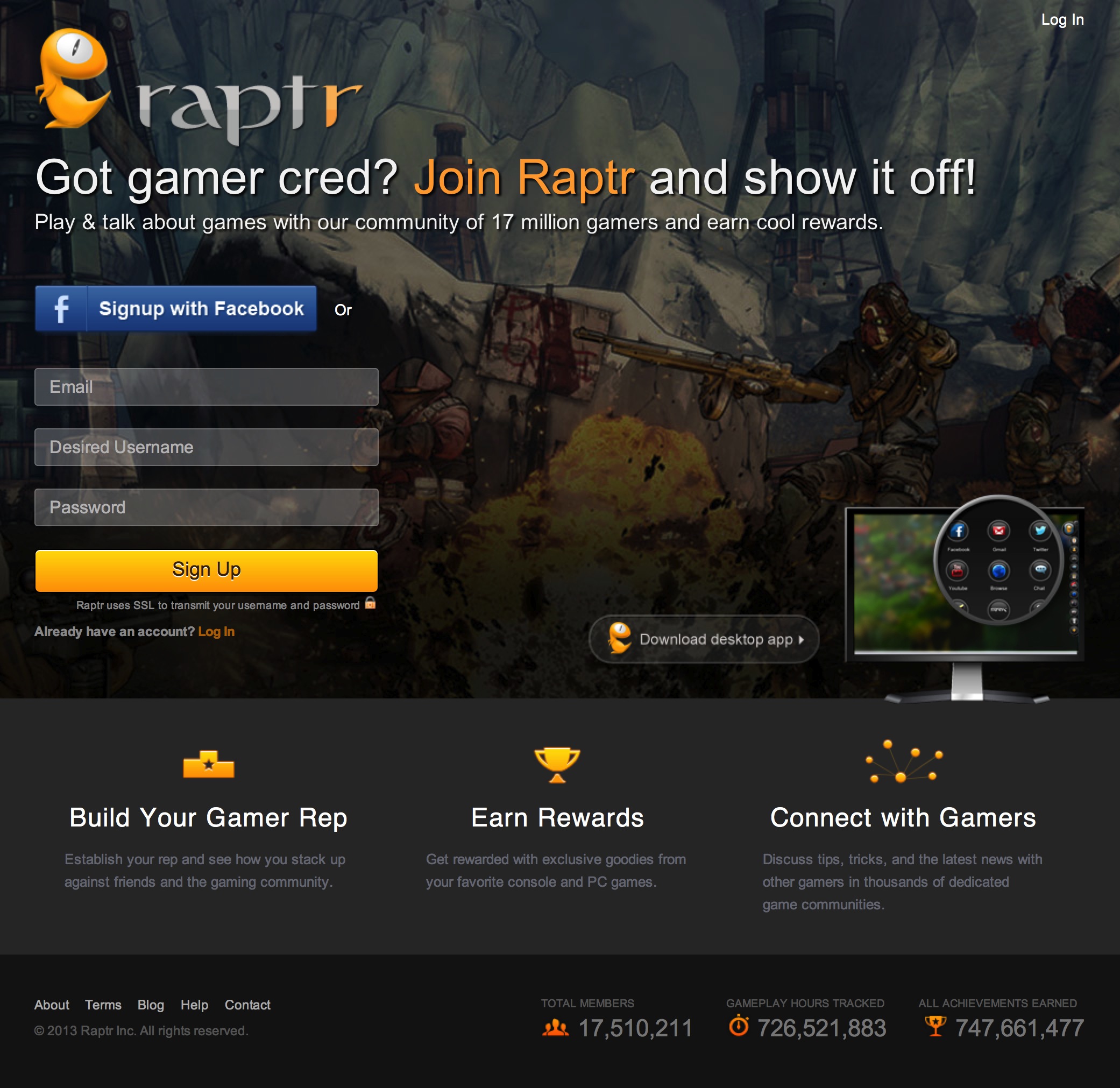
Even for games that could be classified as single-player experiences, would you say that growing a community around the game is quickly becoming a necessity?
Absolutely. Some of the most popular games today are still single-player experiences, yet there’s no lack of user generated content, conversation, and buzz surrounding these games. Just take a look at a game like Assassin’s Creed — the strength of their community is immediately evident if you’ve ever been to a Comic-Con or PAX event by the swarm of cosplay present. This community passion is a big reason why AC continues to succeed year in and year out.
Talk to me about the connection with the GMAs and the “Best Community Activation” award and why that’s such a good fit for Raptr?
The GMA’s are a perfect fit for us because our “Community as a Service” mantra is applicable not just by game designers, but by marketers too, and the GMA’s provide a fantastic platform with direct access to these key industry decision makers. What we mean by “Community as a Service” is a player-first approach to community building through carefully planned engagement features and events that are more likely to keep players engaged with a game even when they aren’t playing — not just simply managing a forum or a Facebook page. And what we want game makers and marketers to realize is that this ultimately benefits them as well because gamers are more likely to stay loyal to their brands rather than moving on to the next one.
Along those lines, talk to me about some of the nominees from the “Best Community Activation” award and why they’re some of the best examples of “Community as Service.”
We were honored to have the chance to recognize the best in the industry that think about their players and communities first and treat them right by putting the proper tools in front of them both in and out of game. The list of nominees included Borderlands 2 for the continuous Shift code scavenger hunt they’ve created to rewards fans for following their brand across multiple social and media channels, Starcraft II and their continued success in eSports, Call of Duty: Black Ops II with the Elite service steadily improving and now being made free for players, Rift and the loyalty program they put in place through the Raptr Rewards Program that drove 58 percent longer play sessions, and EVE Online and their player-elected Council of Stellar Management and player-driven narrative.
But ultimately League of Legends took home the gold for their undeniable success in the eSports arena this past year, full launch of Spectator Mode, and innovative player-run discipline system – The Tribunal – just to name a few.
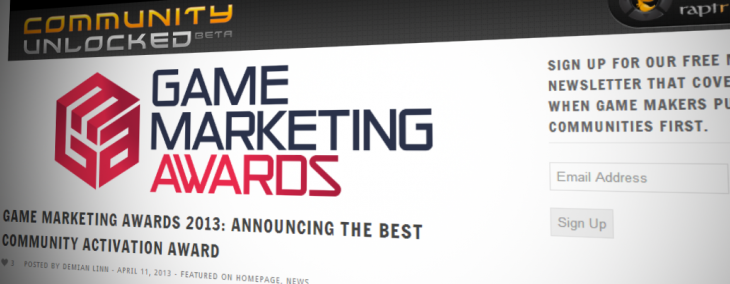
With Sony incorporating the “Share” button into the PS4, do you think that this is a sign that the console makers “get it” when it comes to “Community as Service”
The “Share” button is a step in the right direction as providing players community tools to create content for your game in the form of videos and live broadcasts is a cool feature for gamers and is good for business, but “Community as a Service” isn’t just about adding a simple in-game social feature. It’s a principle that should be evident across the entire experience, so I’m definitely interested in seeing what else Sony has up their sleeve.
Have you liked what you’ve seen or heard so far from Sony, Nintendo and Microsoft and what would you like to see for the next generation?
I think it’s been answered by the question above — the “Share” button is a small step in the right direction and I’d like to see next generation consoles make a full-fledged effort to empower gamers to create content via an arsenal of community tools.
Exclusive: Luring Fans Back To ‘Dead Island’
By Meelad Sadat
Talk to a game marketer and they’re bound to remember the original Dead Island cinematic trailer. The game was announced at E3 2006 but went into virtual hiding for nearly five years as developer Techland, best known for its Call of Juarez games, plugged away at it. Then Deep Silver released the cinematic trailer at GDC 2011, and suddenly the gaming world was waiting for this first-person zombie melee-shooter as if George Romero was behind it. And it was for good reason. The trailer managed to pack into three minutes the normal-to-terror story arc and emotionally charged moments of personal survival that are pretty much staples of the zombie genre. Plus it was brilliantly edited.
Dead Island released to mostly positive critical reception and was by all accounts a surprise hit. That gave publisher Deep Silver a lot more to work with for the follow up, Dead Island Riptide. The new game hits shelves today, and it’s not a sequel, according to Deep Silver director of marketing Aubrey Norris.
“We consider it the next installment in the series and not necessarily a sequel, since at Deep Silver we have our own philosophy on what a number two of a series is and what just a next installment is,” says Norris. “Dead Island Riptide continues the story of the original Dead Island. It’s basically taking all of the things that fans requested on Dead Island and they wanted more of and kind of ramping it up to twelve.”
After talking with Norris, it’s clear that the ‘service to fans’ mentality was the foundation for the second game, and it went beyond marketing. We caught up with her to get deeper insight into what it took to get the original game on everyone’s radar, and now try to lure fans back.
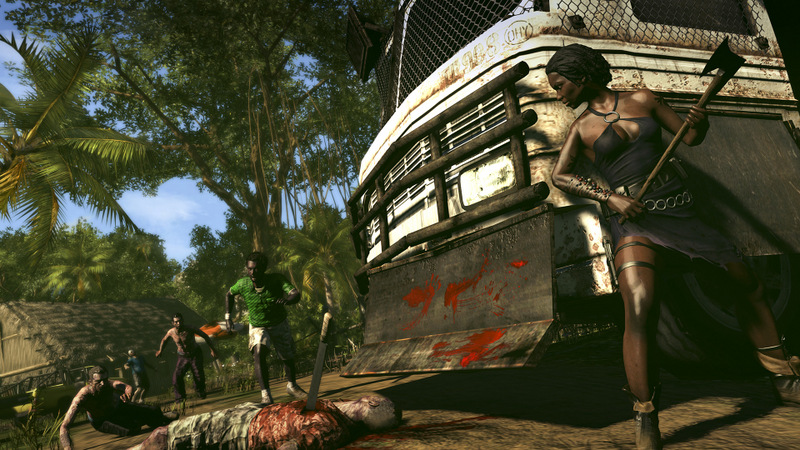
You mentioned marketing on Riptide is very different than the first Dead Island. What’s different?
Marketing new IP is really difficult because it seems like — it’s almost like being in the cool kid’s club in high school. Once you’re into it, you’re in, but it’s hard to get into it. Launching new IP is a difficult thing and I think that first trailer helped us just to get the name out there, and get the interest out there. But the thing that really carried our first step Dead Island campaign was that we followed it up relatively quickly with game play. We only saw increases when game play was shown. I think there’s a lot of people who look at Dead Island and go, ‘you know that game, that only sold because of the trailer’. Well not actually at all. I’d say not even one percent of our pre-orders came between the trailer and our first game play showing. It was all based off of game play — people are still buying Dead Island based off of how much fun they’re having with their friends in co-op. We continue to engage our community. We’re almost two years later and we still, every day, we engage our community. I think that’s helping Dead Island keep going strong. We’re still moving really huge numbers every week.
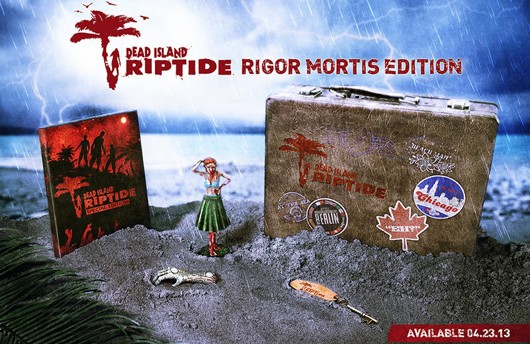
As far as Dead Island Riptide, this time since we’re not a new IP anymore it’s more about embracing our community and doing things for them. We look at ourselves as, we’re in service to them. We’re there to make their lives more fun. We’re there to give them what they want. We’re not there to tell them what they want.
For example, when we were coming up with the North American collector’s edition, we said, ‘We don’t want to just guess what people want in the collector’s edition — why don’t we just ask them what they want and let them vote on it ‘ So we put our survey on the web, and we put a ton if ideas on there, and we said ‘hey guys, what would you like in a Dead Island collector’s edition ‘ So we actually let the fans decide the Rigor Mortis Edition for Riptide. That’s an example of how we’re letting the fans tell us how they want this to go.
What about the Zombie Bait ‘bloody bust’ pre-order bonus that raised some hackles, can you talk about that a little bit?
The UK did that. I was definitely surprised. I wouldn’t do that for North America, that was never an option because we have our fan-generated collector’s edition.
Do you think it was a bit of misunderstood British humor?
It might be.
Do you have other examples of fan sourcing?
The fans have told us they want videos, they want game play, that’s what they’re all about. So we’re focusing on video. Everything we do in our campaign for Riptide is either video, or social, or both. If it doesn’t fall into those areas, we don’t want to do it. They’re not the things that our fans want, they’re not the things that our fans are asking for. Quite frankly, they’re a lot of things outside of those realms that are more traditional stuff, like your home page takeovers and that kind of thing, and that’s just not working any more. I think a lot of marketers are really hesitant to move away from that because they’re so used to doing it, because it’s the way it’s always been done. But that’s not how people want to be talked to. They’re not even receptive to that anymore in certain generations. We’re all about serving the community.
Seems like the way you’re embracing the community is similar to a MMO game or free-to-play game. Tell me more about what you’re doing on social.
 Aubrey Norris
Aubrey Norris
When you have an IP and you really believe in it, and you really love it as a company, you need to stick with it. You can’t just ship the game and then, while you have DLC coming out, engage your community and that’s it. We have never stopped tweeting with our fans, we’ve never stopped doing Facebook stuff. We play with them, we’ll do random play-throughs, and this is two years after the original Dead Island came out. If you care about an IP in the long term, you can’t just let it go waiting for the next one to come, you’ve got to keep it going. You really have to invest in it almost personally.
I carry my iPhone with me everywhere I go — I have every single Twitter account right here. I love talking to the fans, absolutely love that. I love following fans with our official Twitter account and seeing their reaction, they get so excited about it. You really have to be addicted to making them happy and doing stuff with them that really gets them stoked. Just keep it going — if you really care about your communities, you’ll do that. That should be an automatic thing.
Are you doing any TV for Riptide?
Yes, absolutely.
Any plans for a live action spot?
I’ve never seen people get more amped about a game because of a live action TV spot, to be honest. When I asked our community about TV spots and see the chatter that happens there, it’s usually just like ‘hey I saw the commercial for X game but they didn’t show me anything’. They get pissed off actually if you don’t show them the game. For us it’s just important to keep it simple and show them the game play and give them an idea of what they can expect. I think when a lot of companies invest in really expensive live action TV spots, I’m like, that’s great man but people just want to see the game and decide by looking at the game.
It’s fun if you’re in the middle of the campaign and you make some cool live action videos just to celebrate the IP and the characters. When you get down to, like, this is your TV ad and it’s your shot, you have 30 seconds to sell the game to somebody watching you on SyFy or whatever, show me the game. It’s about the game.
Exclusive: Finding Solace In ‘Torment’
By Meelad Sadat
The classic role-playing game Planescape: Torment revolved around the philosophical conundrum, “What can change the nature of a man” inXile posed a different question for the sequel Torment: Tides of Numenera, introducing a Kickstarter campaign to get it off the ground by asking, “What can change the nature of a game.”
Whatever answer they intended, what’s going to change the nature of this game is how it shattered its Kickstarter goal in the first day. inXile asked for $900,000. Their Kickstarter became the fastest to raise $1 million, doing so in just over seven hours. Within a few days it had raised $2 million.
Even with inXile’s first success on Kickstarter with Wasteland 2, another classic RPG the studio is now reprising, studio founder Brian Fargo claims he didn’t see the quick outcome of this one coming.
“We never dreamed about beating the Kickstarter record,” Fargo told us in an email. In a follow up interview, he added, “The stars really lined up for this one.”
The momentum has naturally cooled off. As of this writing the ticker is at about $2.7 million, but that’s with 17 days to go, and Kickstarters usually see a surge in their final stretch. When it’s over, inXile will have enough dough in the can to significantly up the scope of what they pitched. There is a chart on their Kickstarter page tracking just how much game play they intend to add with each stretch goal reached. Somewhere out there, their backers must be getting the coffee shakes just thinking about it.
Torment fans were probably shaking with excitement before they made it down the game’s Kickstarter page the day it launched. Fargo was at Interplay when they published Black Isle’s original Planescape: Torment, a critically lauded game and considered one of the deepest story-driven RPGs ever made. Fargo calls it one of the games he’s most proud of from his time at Interplay. For the sequel, he has two key people from the original on board, developer Colin McComb and designer Monte Cook. In a somewhat unconventional way, Cook developed the setting for the new game. He created Numenera as an original IP for a table top game. And he did it on Kickstarter, where last fall he shattered his own crowd funding goal by raising more than $500,000 on an original ask of $20,000.
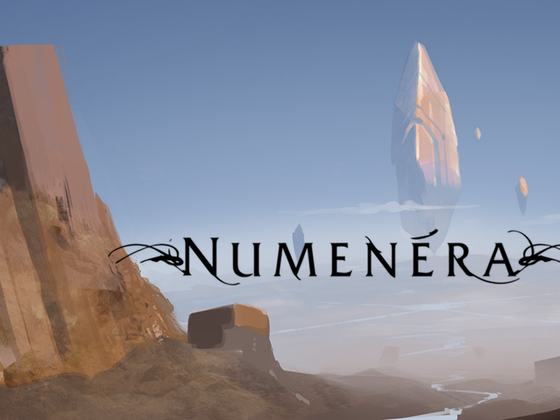
Whether by circumstance or grand design, the way Torment: Tides of Numenera has come together already has a legend about it. The truth might be that a sequel under Fargo and inXile’s stewardship was inevitable. In fact, Fargo makes you think they pitched it to publishers in the past based on a humorous skit in their Kickstarter video. He also hints that his days of pitching publishers might be over.
We talked with him about the Torment Kickstarter and his views on crowd funding games after this second big success for his studio.
Do you have the IP rights to the original Torment or is branching it into Numenera a way to reprise it as a new property?
The original Torment game was based in the Planescape universe from TSR. That particular game represented a certain style and verve that we all wanted to recreate, and we didn’t feel that it was necessarily tied to that one universe. Of course it just seemed perfect that Monte Cook, who was one of the co-creators of Planescape – along with Zeb Cook and Colin McComb while at TSR – created a new setting called Numenera that fit perfect within the vision of what we wanted to do. The stars really lined up for this one.
What are your views on Kickstarter as not just a funding platform for games, but one where game makers can test the waters for what players want?
People have often talked about Kickstarter fatigue but instead I saw that as crowd funding doing its job. In conversation, people will often tell you how excited they are about a concept or how badly they want a sequel, but the rubber meets the road when it comes down to people voting with their money. And the process has a secondary effect of having the gamers more invested – financially and emotionally – such that we have a strong dialogue about what the game becomes. This is the paradigm for future development as far as I’m concerned.
What about as a marketing platform, do you think getting visibility during a successful Kickstarter campaign can translate into broader interest and sales momentum when the game ships?
And yes another benefit of having all these great people behind a game is the word of mouth that spreads purely on the game itself. No marketing jargon or false hype but pure organic and viral communication. Once again I see a shift away from the old days when people ran marketing campaigns to trick people into buying bad games for a few weeks. With crowd funding you have a large body of people who were part of its creation from day one.
Based on what you’ve seen on Kickstarter, is it a setback for creators who don’t get funded the first time or is it ‘if at first you don’t succeed, try again’?
I believe a creator can take another go at Kickstarter so long as they were 100 percent honest and transparent when they tried the first time. It may well have been that they only failed because concept was not strong enough. I had a friend of mine launch an unsuccessful Kickstarter campaign based on a concept that was not really in his wheelhouse. I told him it that it was like going to a concert for my favorite band only to have them play all new material. You need to focus on delivering what the audience would like to see.
Will inXile ramp up staff now that your second Kickstarter is successful?
We only need to ramp up slightly on the producing side since we have to manage a writing and concept art team now. Â The key part of our messaging was we did not want to start a second production team but instead wanted to make sure our core group would roll onto a second game once Wasteland 2 was complete. And this means you need to have the pre-production fully complete if you want to be working efficiently and on a design that has been thoroughly pored over.
The prizing tiers are fantastic, both in terms of the thought and effort put into them and the presentation. Do you think prizing is a driver to get backers on board or is it the equivalent of a point of sale tactic, getting them to give more once they believe in a project?
No tier reward system will work unless there is genuine excitement and demand for the game. We take our communication with the gamers very serious and a major part of the reason why the tiers are so good is because we crowd sourced that aspect of our campaign also. Why guess when you can reach out and hear directly what they want from a campaign
Are publisher pitches really as painful as you portray in your Kickstarter video with the kid in the limo?
It was difficult for me to figure out the green light process of the publishers no doubt. Normally you would just never hear back which we safely assumed was a no. But often I would follow up as to why there was no interest so as to learn from the process, but this too was met with silence. It really got absurd at the end when we would have publishers come to us with a specific idea they wanted created. We would spend months working with their producer to basically communicate their vision with concept art etc. only to have their own idea shot down in committee. That was when I knew it was time to take matters into my own hands.
